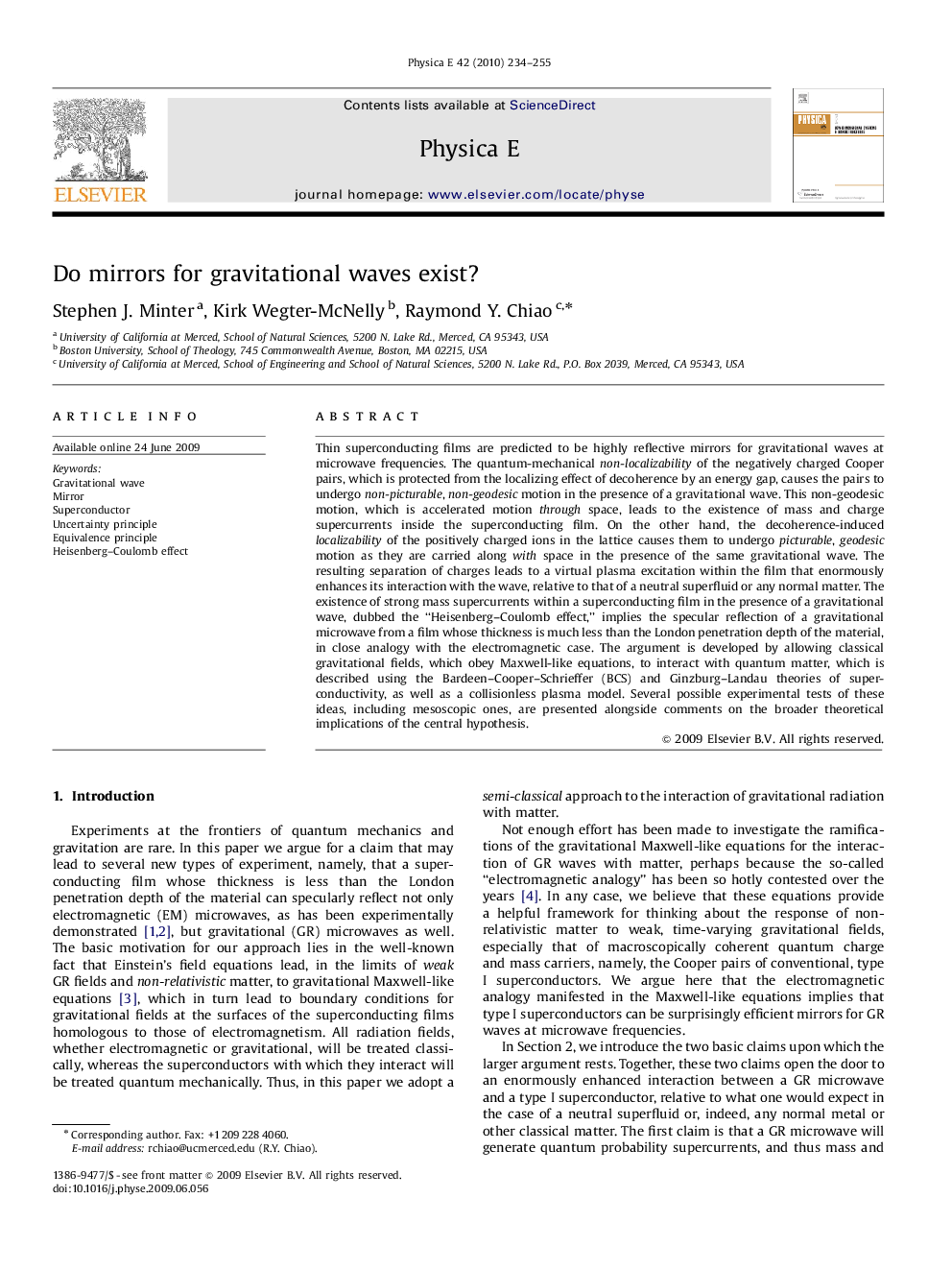| کد مقاله | کد نشریه | سال انتشار | مقاله انگلیسی | نسخه تمام متن |
|---|---|---|---|---|
| 1546415 | 997615 | 2010 | 22 صفحه PDF | دانلود رایگان |

Thin superconducting films are predicted to be highly reflective mirrors for gravitational waves at microwave frequencies. The quantum-mechanical non-localizability of the negatively charged Cooper pairs, which is protected from the localizing effect of decoherence by an energy gap, causes the pairs to undergo non-picturable, non-geodesic motion in the presence of a gravitational wave. This non-geodesic motion, which is accelerated motion through space, leads to the existence of mass and charge supercurrents inside the superconducting film. On the other hand, the decoherence-induced localizability of the positively charged ions in the lattice causes them to undergo picturable, geodesic motion as they are carried along with space in the presence of the same gravitational wave. The resulting separation of charges leads to a virtual plasma excitation within the film that enormously enhances its interaction with the wave, relative to that of a neutral superfluid or any normal matter. The existence of strong mass supercurrents within a superconducting film in the presence of a gravitational wave, dubbed the “Heisenberg–Coulomb effect,” implies the specular reflection of a gravitational microwave from a film whose thickness is much less than the London penetration depth of the material, in close analogy with the electromagnetic case. The argument is developed by allowing classical gravitational fields, which obey Maxwell-like equations, to interact with quantum matter, which is described using the Bardeen–Cooper–Schrieffer (BCS) and Ginzburg–Landau theories of superconductivity, as well as a collisionless plasma model. Several possible experimental tests of these ideas, including mesoscopic ones, are presented alongside comments on the broader theoretical implications of the central hypothesis.
Journal: Physica E: Low-dimensional Systems and Nanostructures - Volume 42, Issue 3, January 2010, Pages 234–255